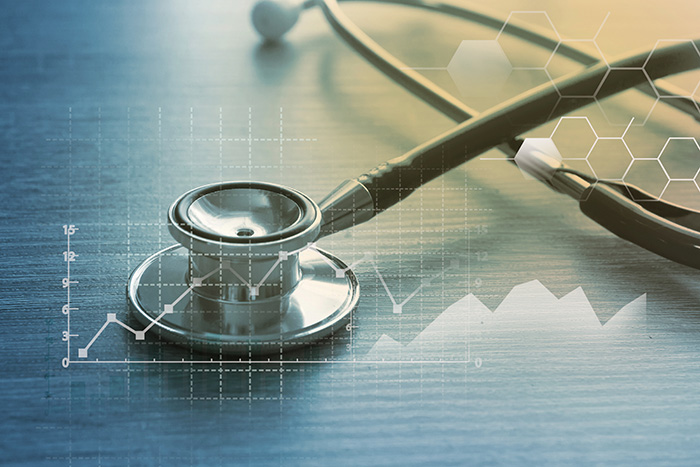Unlocking Artificial Intelligence and Analytics for Healthcare Institutions

Healthcare is yet another industry undergoing digital transformation, both in the way patients are diagnosed and monitored in hospitals and other medical environments. The Internet of Things (IoT), which is driving greater consumer convenience and business intelligence for other sectors, is also making medical care more convenient, accurate and — in the case of a hospital stay or residential care center — safer.
WEBINAR: VIDEO CONTENT ANALYTICS FOR COMBATING THE PUBLIC HEALTH CRISIS
Here’s a closer look at some of the emerging technologies that are poised to disrupt the healthcare industry.
Video Analytics Software
Addressing patient care and medical needs are of critical concern for healthcare institutions; however, for healthcare providers, ensuring the physical safety of patients and visitors is as critical as responding to their medical needs. Many healthcare facilities use video surveillance to monitor their facilities, but they could maximize their video surveillance investments, increase security and enhance operational efficiency by integrating video content analytics solutions. With video analytics, organizations can leverage real-time, actionable intelligence to drive increased safety, on-site traffic optimization, crime prevention and business performance.
Video analytics leverage artificial intelligence to detect objects in video, identify and classify them and then index them as metadata. The metadata can then be utilized as business intelligence. For instance, when metadata is aggregated over time, hospitals could use it to create activity heatmaps for understanding visitor and patient traffic within the facility, uncovering navigation and entrance trends and proactively ensuring pathways to emergency treatment are always clear. In addition to traffic monitoring, healthcare centers can use video analytics to optimize the business performance of on-site amenities, including restaurants and shops, by providing intelligence about buyer demographics and visitor movement.
Beyond leveraging quantifiable data for tracking trends over time, hospitals rely on video analytics to increase on-site security and situational awareness. Among other key capabilities, hospitals can configure intelligent alerts based on the metadata extracted from video, to trigger real-time calls-to-action for suspicious behavior, security threats and emergencies.
Telemedicine
Another emerging trend in healthcare operations is the evolution of telemedicine. Telemedicine is defined as medical care when the patient and physician are not physically present. The IoT has streamlined this, enabling physicians to conduct virtual appointments with their patients via computer, tablet or mobile device. Just think of it as healthcare, delivered remotely. There are three main types of telemedicine
- Interactive medicine, where a patient and doctor communicate and consult in real-time.
- Store and forward, where a doctor can acquire patient information and share it with another doctor or specialist at another practice.
- Remote patient monitoring, where mobile medical devices are used by doctors to remotely monitor patients in real-time.
Personal Emergency Response Systems (PERS)
Personal Emergency Response Systems, or PERS, are wearable, IoT devices that help keep patients safer, whether they’re living at home or in a special care facility. PERS are most commonly used among elderly patients, particularly those who may be suffering from dementia or similar conditions. For patients with PERS still living at home, help is quickly accessible with the push of a button. For those living in special care centers, staff is better able to monitor the whereabouts of such patients, as the PERS can act as a GPS of sorts to provide location data as well as other key information.
Patient-Created Data
One other way data analytics is poised to play a role in healthcare is the continued integration of patient-generated data into a specific diagnosis. Think of devices like Fitbits, the Apple Watch, Bluetooth scales — this equipment helps track sleep and activity patterns, fitness data and other biometric data. Devices such as these are being increasingly integrated into medical software to help doctors acquire information such as vital signs, weight, blood pressure, sugar levels and more. In the future, don’t be surprised to see sensors integrated into clothing and other fabrics to help further deliver patient data in real-time.
Beyond the amazing healthcare industry strides in new-age procedures, drugs and treatments, significant advances to patient care are being achieved with the help of artificial intelligence and analytics driven technologies. As these solutions continue to advance, hospitals and care centers will be able to further streamline their operations and provide patients with effective and efficient service.
Signup to receive a monthly blog digest.